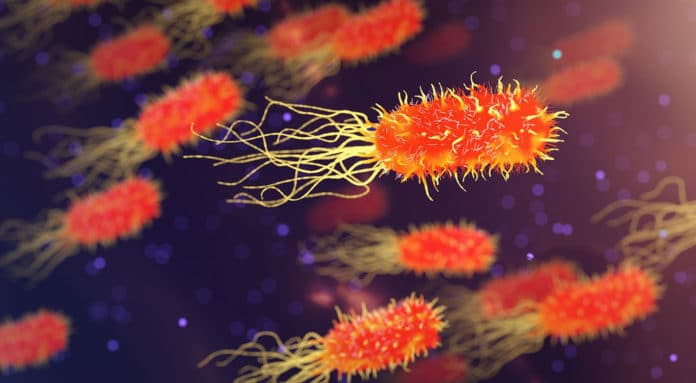The human body harbors numerous and diverse bacteria, most of which are located in the gut. These gut bacteria evolve at intermediate timescales.
The mutation and evolution of gut bacteria can have important public health implications. Most of the studies have had focused on the factors that influence the evolution of gut bacteria. On the other hand, some studies have pointed to the actual structure of the gut, including its hydrodynamic flow.
Scientists at EPFL and Sorbonne propose a new model of the diversity and evolution of gut bacteria that offers some detailed insights on how the internal guts flow affects the distribution of the gene pool. It shows that the gut environment helps neutral mutations become prevalent.
The model shows specific spatial structure of the gut, with hydrodynamics and concentration gradients, can substantially increase the probability that neutral mutants reach high proportions and eventually take over the population.
Professor Anne-Florence Bitbol at EPFL’s School of Life Sciences said, “These neutral mutants refer to bacteria that undergo mutations that have no effect on the growth rate, or at least their impact is negligible in the context of an entire bacterial population.”
The gut’s environment strongly increases the average proportion of neutral mutants. This, in turn, increases their ability to take over the population. As a result, the specific environment of the gut enhances neutral bacterial diversity.
Bitbol said, “The neutral mutants in the gut means that a larger fraction of mutants that appear randomly can reach important fractions instead of rapidly dying out. This can increase the diversity of the gut microbiota and its ability to adapt to environmental changes. And because the composition of the gut microbiota can impact metabolism, this could have indirect implications on metabolism.”
“A key point is that the increase of diversity and of adaptability that we predict is strongly associated with the existence of strong gradients of food and bacterial concentrations in the colon. Bacterial concentrations are much lower in the small intestine than the colon, so there is a lot of food and fewer bacteria at the entrance of the colon.”
“But further down the intestine, bacteria have eaten the food and reproduced, so there is less food but more bacteria. If these gradients are weaker, the enhancement of diversity that our model predicts will also weaken. This can happen if the flow velocity in the gut changes or if the contractions of the gut muscles become stronger or weaker. So there might be possible links to metabolic disorders such as inflammatory bowel disease. Understanding these effects could potentially be a first step toward learning to alter them to improve such conditions.”
“So far, we have worked on neutral mutants for simplicity, but investigating the case of beneficial mutants – those that increase growth rate – and deleterious mutants – those that decrease growth rate – would be extremely interesting and would give a complete picture of the impact of the spatial structure of the gut on the evolution of gut bacteria. There is also a lot to do to increase the realism of the model gradually.”
Journal Reference:
- Darka Labavić, Claude Loverdo et al. Hydrodynamic flow and concentration gradients in the gut enhance neutral bacterial diversity. PNAS 04 January 2022. DOI: 10.1073/pnas.2108671119
